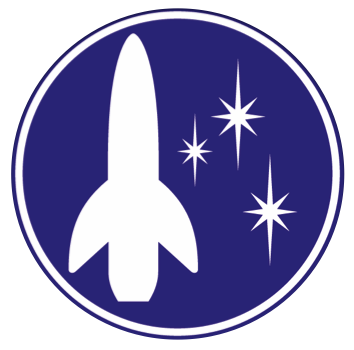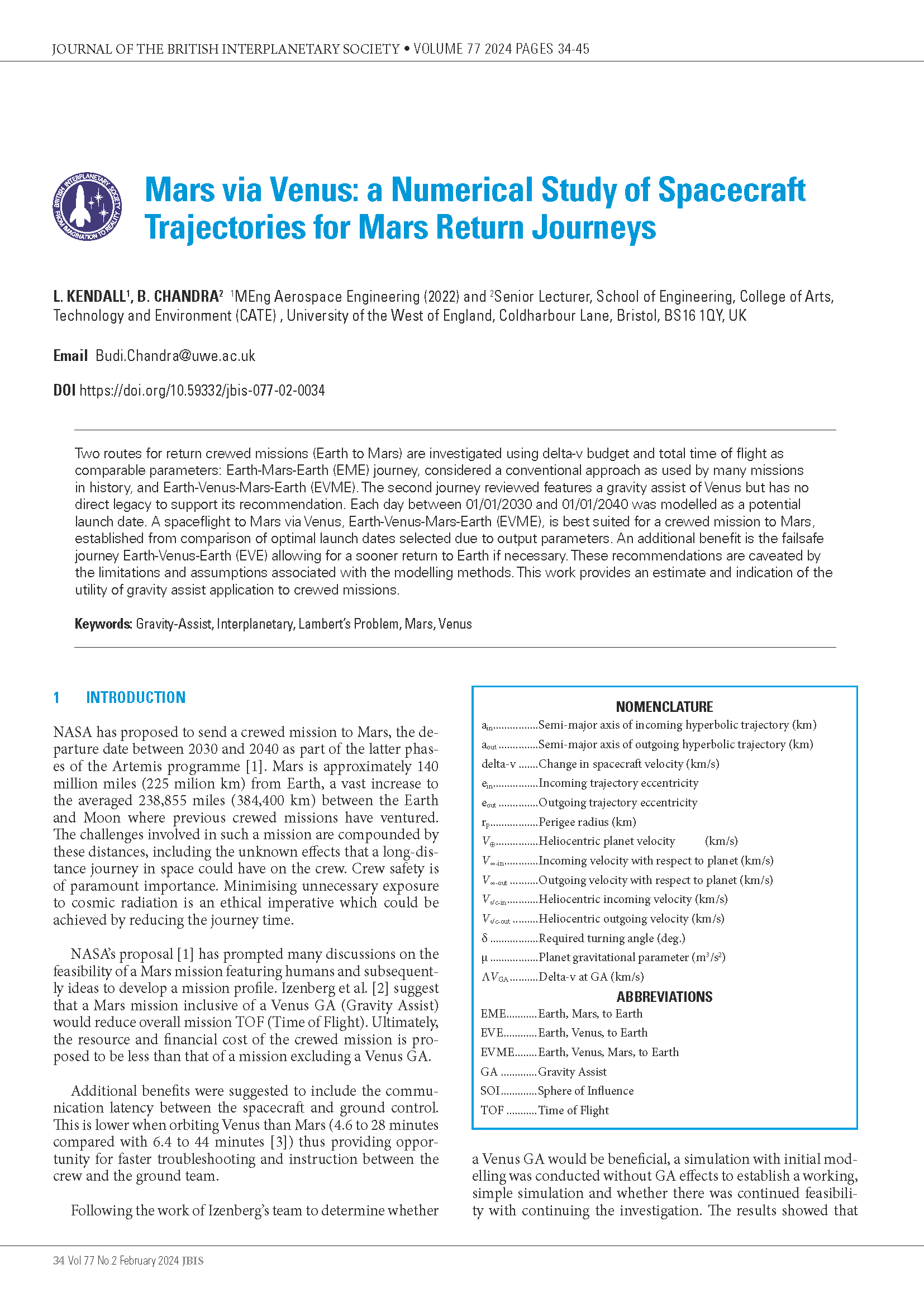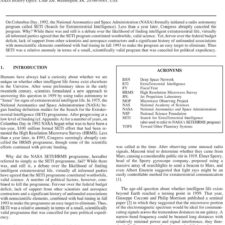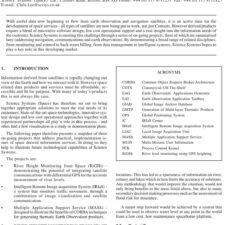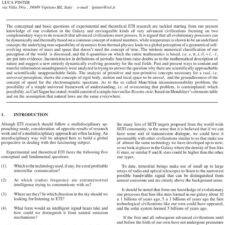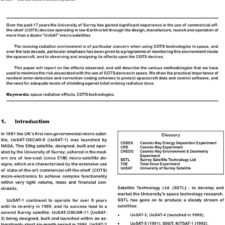Mars via Venus: a Numerical Study of Spacecraft Trajectories for Mars Return Journeys
£5.00
L. Kendall (2024), JBIS, 77, pp.34-45
Refcode: 2024.77.0034
DOI: https://doi.org/10.59332/jbis-077-02-0034
Two routes for return crewed missions (Earth to Mars) are investigated using delta-v budget and total time of flight as comparable parameters: Earth-Mars-Earth (EME) journey, considered a conventional approach as used by many missions in history, and Earth Venus-Mars-Earth (EVME). The second journey reviewed features a gravity assist of Venus but has no direct legacy to support its recommendation. Each day between 01/01/2030 and 01/01/2040 was modelled as a potential launch date. A spaceflight to Mars via Venus, Earth-Venus-Mars-Earth (EVME), is best suited for a crewed mission to Mars, established from comparison of optimal launch dates selected due to output parameters. An additional benefit is the failsafe journey Earth-Venus-Earth (EVE) allowing for a sooner return to Earth if necessary. These recommendations are caveated by the limitations and assumptions associated with the modelling methods. This work provides an estimate and indication of the utility of gravity assist application to crewed missions.
Keywords: Gravity-Assist, Interplanetary, Lambert’s Problem, Mars, Venus
